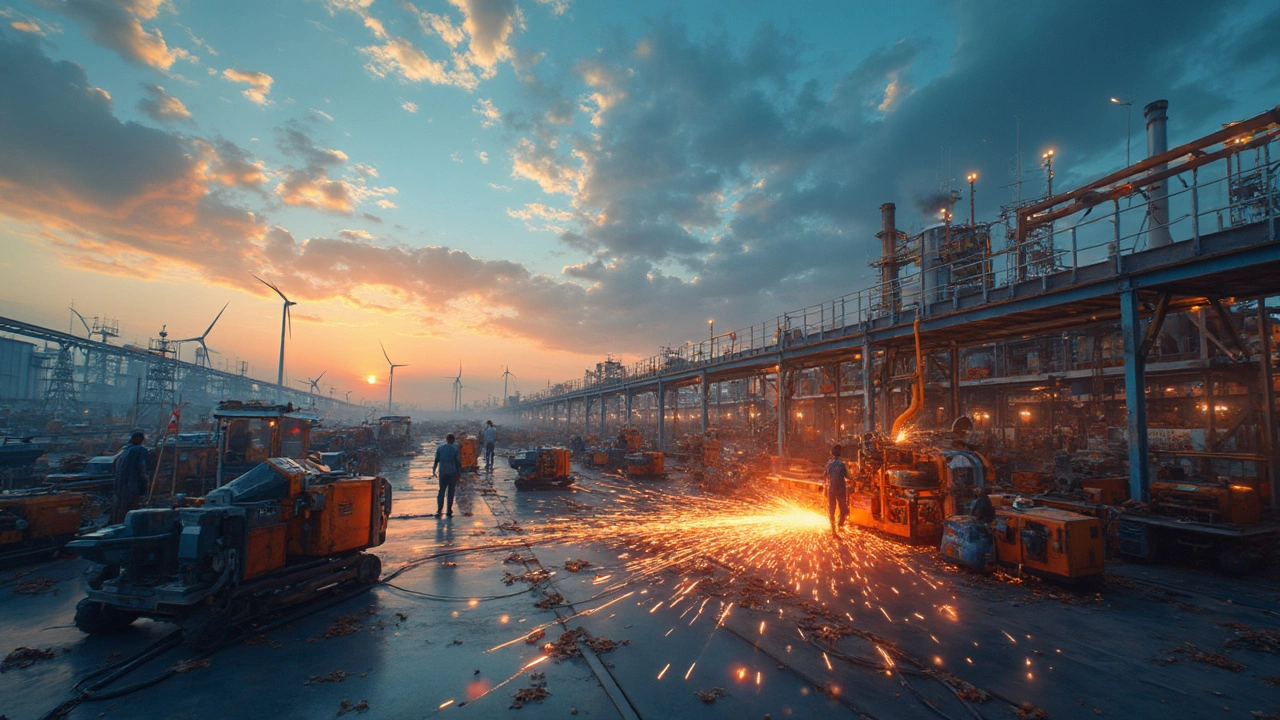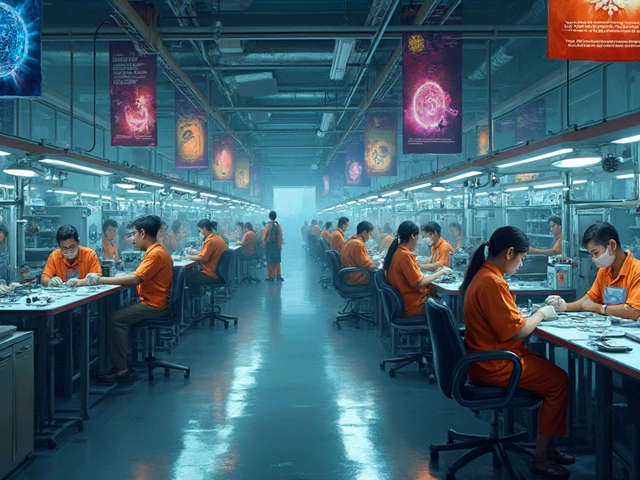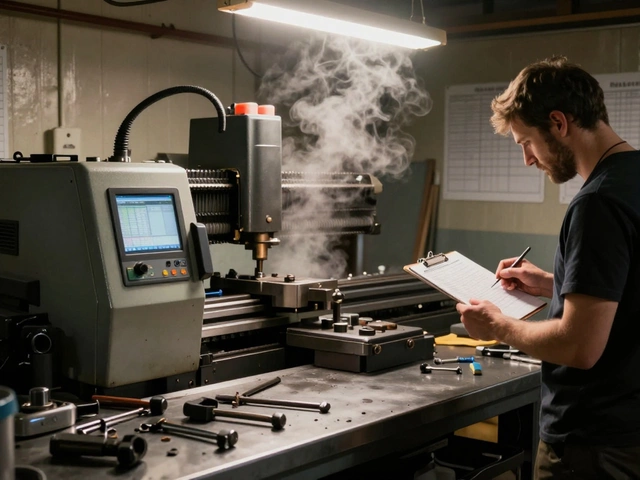Have you ever wondered who's at the top of the manufacturing game globally? Well, let me tell you, it's a title that's frequently chased and fiercely defended. Right now, the heavyweight champion in this arena is China. With its vast resources, infrastructure, and competitive labor costs, China has established itself as the manufacturing powerhouse of the world.
But it's not just about what's made; it's about how the government supports it. China has several government schemes in place that bolster its manufacturing sector, including substantial subsidies and policies aimed at fostering technological advancement. These moves not only support existing manufacturers but also attract new players looking to tap into China's vast network and resources.
Technology plays a crucial role too. With automation, smart factories, and AI-enhanced processes, the efficiency in production lines has shot up significantly. Countries that adapt and integrate these innovations often stay ahead in the global manufacturing race.
- Current Manufacturing Leader
- Government Incentives and Policies
- Technological Innovations Boosting Efficiency
- Challenges Facing the Manufacturing Leaders
Current Manufacturing Leader
It's no surprise that China holds the crown in manufacturing. This hasn't happened overnight. China began its journey to the top back in the late 1970s when it opened its economy to foreign investors. Fast forward to today, and its output seems unstoppable.
One of the factors behind China's success is its sheer scale. The country boasts extensive industrial zones and a massive workforce skilled in various manufacturing fields. Coastal cities like Guangzhou and Shenzhen are bustling hubs where electronics, textiles, and machinery are produced at mind-boggling rates.
Government Schemes Advantage
The Chinese government plays a proactive role in propelling its manufacturing might. Schemes like the "Made in China 2025" program aim to move production up the value chain. This plan focuses on upgrading ten key sectors, including aerospace, robotics, and green energy technologies.
Economic Scale and Innovation
Thanks to its large-scale operations, China benefits from economies of scale. This means it can produce goods at reduced costs compared to smaller players. Also noteworthy is the rapid adoption of technology. From AI-driven systems to robotics, China has embedded innovation in its core manufacturing processes.
However, it's not just about keeping costs down. China is also eyeing quality improvements by investing in research and development. In fact, over $500 billion was dedicated to R&D in recent years, according to several economic reports.
| Country | Manufacturing Output (USD Trillions) |
|---|---|
| China | 4.1 |
| United States | 2.3 |
| Japan | 1.3 |
In summary, China's position as the manufacturing capital isn't just a consequence of its economic policies but a result of strategic investments, technology, and scale. While there are challengers, for now, China remains firmly on top.
Government Incentives and Policies
Government support is like turbocharging the engines of manufacturing. Take China, for instance. The Chinese government has been relentless in offering incentives that make the country irresistible to manufacturers worldwide. These policies form the foundation of its status as a global manufacturing leader.
Let's break down some of these prominent schemes:
Subsidies Galore
In China, subsidies are widely used to reduce costs for manufacturing units, boosting growth and attracting foreign investments. These subsidies can cover everything from energy costs to raw materials, making it cheaper and more efficient for companies to produce goods on a large scale.
Tax Breaks to Foster Growth
Tax incentives are another significant carrot dangled by the Chinese government. By slashing corporate taxes for certain sectors or offering income tax reductions, they encourage both domestic and international companies to dig deeper roots in the country. These tax breaks often apply to high-tech sectors or regions in need of economic boosts.
Special Economic Zones (SEZs)
SEZs are regions with differences in business and trade laws compared to the rest of the country. China has established numerous SEZs to create hotbeds of economic activity, drawing in businesses with features like duty-free imports and lighter bureaucratic requirements. Shenzhen is a prime example of how an SEZ can transform from a fishing village to a major tech hub.
Focus on Research and Development
Innovation is the name of the game and China isn't playing catch-up. The government invests heavily in R&D, ensuring that businesses have access to cutting-edge technology. This push for tech-savvy manufacturing ensures high productivity and maintains competitive production costs. Recently, the Made in China 2025 initiative prioritizes advanced manufacturing, further cementing China's position in the global industry trends.
So, when we talk about why China remains top-tier in global manufacturing, these government schemes play a crucial role. In fact, you could say they're the secret sauce to China's industrial success.

Technological Innovations Boosting Efficiency
We live in an era where technology isn't just part of the process; it's the driving force behind it. In the realm of manufacturing, technological innovations have become the backbone of efficiency and productivity. Industries are now shifting towards smart manufacturing, and it's pretty fascinating how it all clicks together.
One standout development is the use of AI and automation. These aren't just buzzwords; they're game-changers. Automation has taken over repetitive tasks, allowing human workers to focus on more complex operations. Robots working side by side with humans enhance productivity and reduce errors. Talk about teamwork! Additionally, AI systems can predict trends, manage supply chains, and optimize production schedules, leading to streamlined operations.
Smart Factories and IoT
Smart factories are popping up everywhere and they're really something. Equipped with sensors and interconnected devices, these factories use the Internet of Things (IoT) to facilitate seamless communication between machines. It's like getting your devices to talk to each other without the family feud. This integration helps in monitoring, predicting maintenance needs, and ensuring optimal operation conditions.
3D Printing: The Manufacturing Revolution
Remember the times when printing meant paper? Not anymore. 3D printing technology is revolutionizing production lines by enabling rapid prototyping and reducing waste. It's particularly useful for custom parts and specialized industries, as manufacturers can adjust designs on-the-fly, cutting down the time from design to production. Talk about efficiency!
| Technology | Impact on Efficiency |
|---|---|
| AI & Automation | Reduces errors, increases productivity |
| Smart Factories & IoT | Improves communication and predictive maintenance |
| 3D Printing | Allows rapid prototyping, reduces waste |
To stay ahead in the global economy, countries are heavily investing in these innovations. By integrating these technologies, manufacturers not only improve their output but also ensure sustainability, paving the way for a future where efficiency meets responsibility.
Challenges Facing the Manufacturing Leaders
Even the top dogs in the manufacturing world aren't invincible. There are quite a few hurdles they face that can put their title at risk. For starters, let's talk about the ever-evolving global economy. When there's a dip or shift in markets, even the most robust manufacturing setups can feel the squeeze.
Rising Labor Costs
In countries like China, where cheap labor has been a staple for success, the shift to higher wages is noticeable. It's a double-edged sword – higher wages improve living standards but also increase production costs. This means some manufacturers are looking towards automation or even relocating to countries with lower operational costs.
Environmental Regulations
With the world becoming more environmentally conscious, stricter regulations on emissions and waste management mean manufacturing leaders must invest in greener technologies. While good for the planet, these investments can be costly and complex to implement quickly.
Trade Wars and Tariffs
Trade wars, especially between major players like the US and China, have led to tariffs that directly impact pricing and competitiveness. Manufacturers often find themselves caught in the crossfire, facing higher costs that cut into their margins.
| Challenge | Impact |
|---|---|
| Rising labor costs | Increased production expenses |
| Environmental regulations | Investment in green technologies |
| Trade wars & tariffs | Higher operational costs |
As these pressures mount, manufacturing leaders have to stay nimble and innovative. By focusing on sustainable practices and leveraging new technologies, they can stay ahead in the increasingly competitive global economy.





